It’s all about wok hay. But for those of us without restaurant woks and their ferocious heat, check out my tips & tricks for perfect home-style Chinese Fried Rice.
I have been in love with Chinese Fried Rice for as long as I can remember. Our family was Catholic, and we didn’t eat meat on Friday. Thus, Dad instituted what he called “Chinese Joint” night and every Friday evening, you could find our family of four at one of the many Chinese restaurants that dotted the Seattle cityscape. We even made it to Chinatown on a few special occasions. Chinese Joint night was special, because we each got to order the one dish we wanted most.
Then oddly, by today’s standards anyway, we ate only our own dish. That was fine by me. The only dish I craved was Shrimp Fried Rice. Mom ordered Egg Foo Yung, in its horrid salty brown sauce and my brother Dan ordered Chow Mein with its ghastly packaged fried noodles and ton of bean threads. I would have loved some of Dad’s deep-fried prawns, but I wouldn’t have traded my Shrimp Fried Rice for them.
Then when I was around 10, in a burst of hunger and enthusiasm, I decided to make Fried Rice myself. How hard could it be? I followed the recipe in Mom’s Betty Crocker cookbook, expecting a masterpiece.
It was ghastly—as in inedible. My rudimentary cooking skills may have been partly to blame, but today I know the real culprits were the ingredients and the recipe. We didn’t have the correct rice in the house. In fact, we rarely ate rice. Most likely, I used Uncle Ben’s Converted Rice. And it would have been hot, not cold. In addition, the recipe called for a foolhardy amount of soy sauce, which even at that young age, I questioned as I poured it in.
So, at long last, I am going to set things right. You CAN make wonderfully delicious Fried Rice at home. It may be the most delicious fried rice you have ever had. It will not, however, taste like Restaurant-Style Chinese Fried Rice. I know, because I have spent years trying.
To discover why I can’t duplicate that restaurant flavor, I did some research on the web. Here are the ingredients that various cooks claim will give that illusive flavor I love so much:
- Chinese preserved sausage
- oyster sauce
- soy sauce
- fresh ginger
- Chinese rice wine
- cold rice
- green onions
I tried them all. No luck. They are each a tasty addition if used in the proper proportions, but none produces the indefinable flavor of Restaurant-Style Chinese Fried Rice.
One cook said to just go to Benihana and watch how they prepare Fried Rice. The problem with that suggestion is that Benihana’s Fried Rice, although tasty, doesn’t have the illusive flavor.
Then eventually, I ran into this idea:
- wok hay
Wok hay is the breath, energy, and spirit of a wok, the seared, smoky taste obtained with proper stir-fry technique and a crazyhot restaurant wok.
Translated, it means breath, energy, spirit. In culinary terms, it is that elusive, heat seared taste that you can get only from stir-frying in a heavy, spun steel wok over extreme heat. The wok must be heated to the point that it releases a wisp of smoke, before the first ingredient hits it.
In Chinese restaurants, this comes courtesy of crazyhot wok stoves. The other secret in achieving wok hay is the technique the Chinese call “pao,” whereby the ingredients are tossed repeatedly in the wok. This is necessary because of the intense heat; one second too long and the ingredients are burnt. It is also the key to ensuring every ingredient touches the heat and receives the sear necessary to release its inner essence and flavor. To achieve wok hay, each ingredient must be added at the right time to release its flavor, each one adding a new layer of flavor when it hits the extreme heat.
Now that you know what wok hay is, I must confess that you can’t achieve it on a home range. There is simply not enough heat. Even if you could increase the BTUs of your gas range, you could not lower your wok down into the flame the way it’s done on a wok stove.
But you can still make Fried Rice that will elicit praise from everyone who tastes it. Even without wok hay, your Fried Rice will beat what is available in most Chinese restaurants in your neighborhood. Here’s what you need to know before you begin.
Tips & Tricks for Perfect Home-Style Chinese Fried Rice
- Use premium-quality, medium-grain white or brown rice.
- Don’t use Basmati or Jasmine rice, as they both have very tender grains that break and mush when stir-frying.
- 1 cup of rice typically calls for 1¼ cups of liquid. Use only 1 cup of liquid for fried rice. You want the rice to be a little firm.
- For golden colored rice, stir a teaspoon of turmeric into the liquid before cooking the rice.
- The texture of the cooked rice determines the texture of the fried rice. For best results, use an electric rice cooker.
- Cook the rice at least a day ahead, separate the grains, lay out, uncovered, onto an edged cookie sheet, and chill thoroughly.
- Use a heavy spun steel or cast iron, flat-bottom wok or large, heavy saute pan. The pan must be able to take the crazyheat without warping.
- The wok or pan must be crazyhot before you add anything to it. Use high heat and wait until you see a light, smoky haze rising from the surface of the pan before adding the oil. If the wok is not hot enough, the rice will stick.
- When you add the cold, cooked rice, toss briefly to coat the grains with oil, then spread the rice out across the surface of the pan, and let it cook for 10-20 seconds. This allows the rice to get that light toasted flavor and color. Use a broad, slightly curved spatula to toss and flip the rice.
- Don’t stir the rice, as this creates sticky, broken rice.
- Pour liquid flavorings on the edge of the wok or pan, not on the rice.
And One Last Tip
As I tested batch after batch of Fried Rice for this post, I noticed that I was struggling to add enough flavor to the bland cooked rice. Then a wild thought occurred. Why not infuse the rice with flavor while streaming it? Thus my final tip is this:
- Steam the rice in chicken stock with sesame oil and salt.
The sesame oil not only flavors the rice beautifully, it also makes it easy to separate the grains.
Fried Rice with Chinese Preserved Sausage
This Fried Rice is a superbly satisfying meal in a bowl. It’s easy to make, but you must begin a day in advance and prepare every ingredient as described. Do not start stir-frying until all ingredients are prepared and sitting next to the stove, along with a broad, curved spatula, large serving spoon, and warm serving platter.
Note There are three basic ways to incorporate the egg into Fried Rice: You can add the egg after stir-frying the rice and quickly toss it with the rice to enrobe each grain with an egg coating, you can move the rice out of the way and scramble the egg in the pan, or you can scramble the egg separately. Each has advantages, but I prefer to scramble separately to keep the egg color and flavor bright.
Cooking Oil
3-4 tablespoons vegetable oil (peanut oil preferred)
Rice
1½ cups raw, medium-grain rice, such as Nishiki brand
1½ cups chicken stock
1 tablespoon toasted sesame oil
½ teaspoon fine sea salt
Aromatics
1 bunch green onions, white portion only, minced
1 tablespoon skinned, minced garlic
1 tablespoon peeled, minced fresh ginger
½ yellow onion, peeled and chopped
Embellishments
3 large eggs, beaten lightly
2 ounces Chinese Preserved Sausage, diced (I used frozen Kam Yen Jan brand from H Mart)
½ cup peeled, diced carrots
½ cup stemmed, ribbed, seeded, diced red bell peppers
Sauce
1 tablespoon Kikkoman soy sauce
1 tablespoon oyster sauce
1 tablespoon dry sherry
1 tablespoon chicken stock
Seasoning
fine sea salt
freshly ground black pepper
Finishing
1 bunch green onions, green portion only, thinly sliced
- To prepare the rice, a day in advance, combine the rice, stock, sesame oil, and salt in a rice steamer. Steam for about 20 minutes, until rice kernels are just tender and still a bit firm inside. Let rest, covered for 30 minutes.
- Scoop rice out onto an edged baking sheet and separate the grains. Let cool and then refrigerate, uncovered, for 12-24 hours.
- To prepare the aromatics, embellishments, and finishing ingredients, complete as directed in the ingredient list.
- To prepare the sauce, in a small mixing bowl, combine the Sauce ingredients (soy sauce, oyster sauce, dry sherry, and chicken stock).
- To cook the egg, in a small nonstick skillet, heat a tablespoon of oil and add the egg. With a flexible silicon spatula. Light scramble the egg as it cooks, breaking the curds into medium-size pieces. Season to taste with salt and pepper and remove to a plate.
- To begin the stir-fry, arrange the cooked rice, aromatics, embellishments, seasonings, green portion of the green onions, and cooking oil next to the stove.
- To stir-fry, set the wok or pan over high heat and heat until you see a light, smoky haze arising from the surface of the pan.
- Add 2 tablespoons of oil and carefully swirl to coat the sides of the pan.
- When the oil is hot enough to evaporate a drop of water on contact, add the Chinese Preserved Sausage. Toss to coat with oil and stir-fry until the fat in the sausage melts, about 1 minute.
- Quickly add the aromatics. Toss to coat with oil and stir-fry until you smell the burst of aroma as it releases.
- Add the carrots and bell pepper, and toss to combine with the oil. Stir-fry for about 1 minute.
- Add the cold cooked rice and toss briefly to coat the grains with oil, then spread the rice out across the surface of the pan, and let it cook for 10-20 seconds. This allows the rice to get that light toasted flavor and color. Use a broad, slightly curved spatula to toss and flip the rice. Repeat until the rice is lightly toasted and begins to dry out.
- Pour the sauce ingredients down the edge of the wok or pan and then quickly toss to distribute throughout the rice. Stir-fry until the liquid is absorbed by the rice or evaporated.
- Season to taste with salt and pepper.
- Add the scrambled egg and green onion, and toss to combine.
- Spoon the rice out onto a warm serving platter, and serve immediately.
Serves 2-3.
More Asian-Inspired Recipes from LunaCafe
- Asian Pancakes (Beijing Pancakes)
- Asian Tacos with Prawn & Shiitake Filling & Cabbage Slaw
- Chinese Cracker Jacks
- Home-Style Chinese Fried Rice
- Spicy Korean Noodle Soup (Jjambbong)
- Spicy Pork Wonton Soup
- Spicy Thai Peanut Sauce
- Thai Red Curry Paste
- Thai Red Curry Soup
- Vietnamese Crispy Crepes (Banh Xeo)
Cookin’ with Gas (inspiration from around the web)
- Michael’s Blog: What is Wok Hay?
- Steamy Kitchen: Secrets to Cooking the Best Chinese Fried Rice
- The Asian Grandmothers: 5 secrets to Making Fabulous Fried Rice
- The Asian Grandmothers: Homemade: Sambal Oelek (and a Chili Paste Comparison)
- The New York Times: The Well-Tempered Wok
- You Tube: Fried Rice Recipe
- YouTube: How to Prepare Fried Rice, Chinese Style
- Zheng Asian Bistro: Wok Hay
I Love Hearing from You!
Please leave a comment. Include your blog URL and CommentLuv will automatically link back to your most recent blog post. Happy New Year! …Susan
Copyright 2012 Susan S. Bradley. All rights reserved.

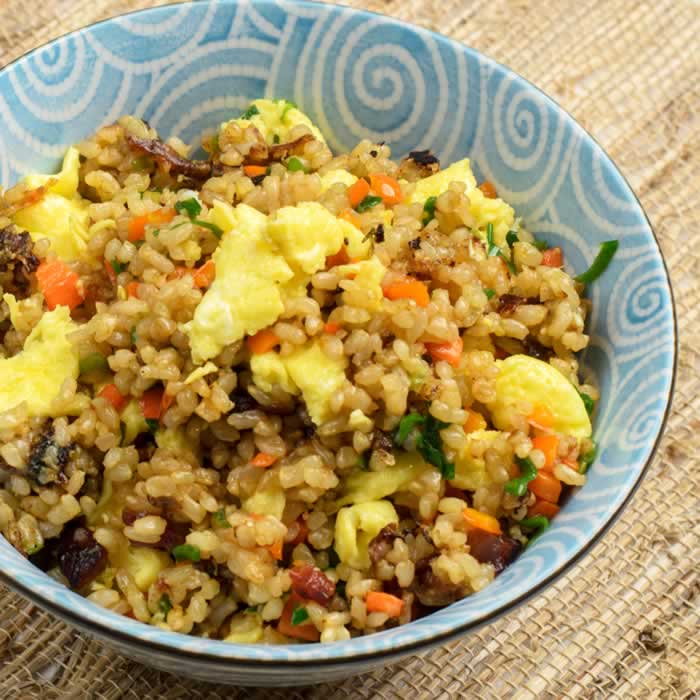
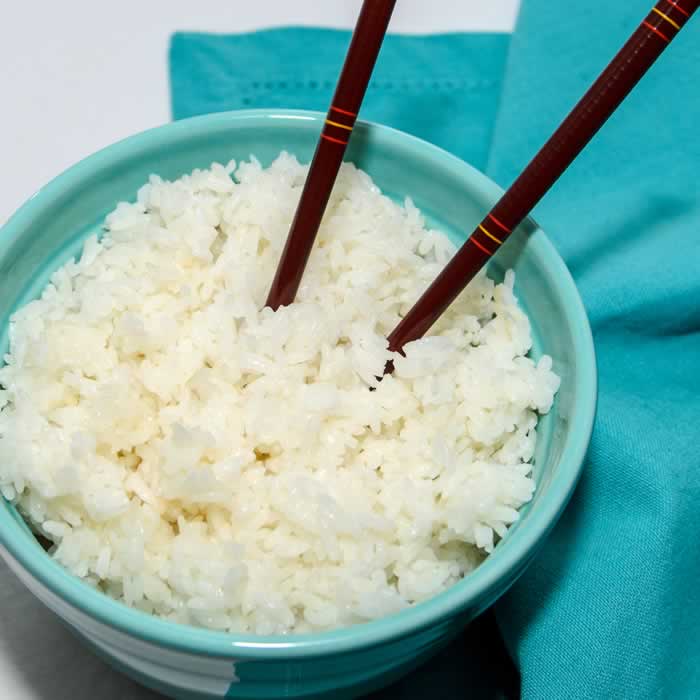

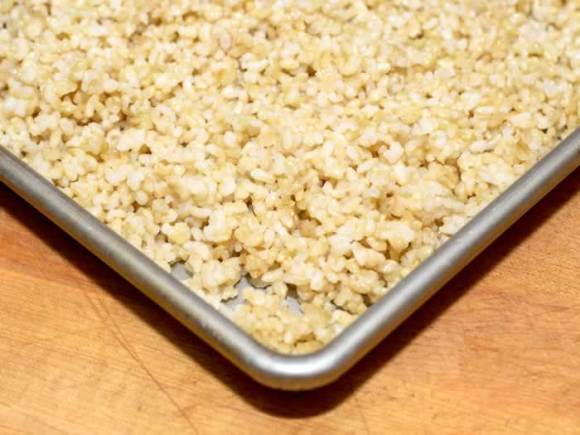
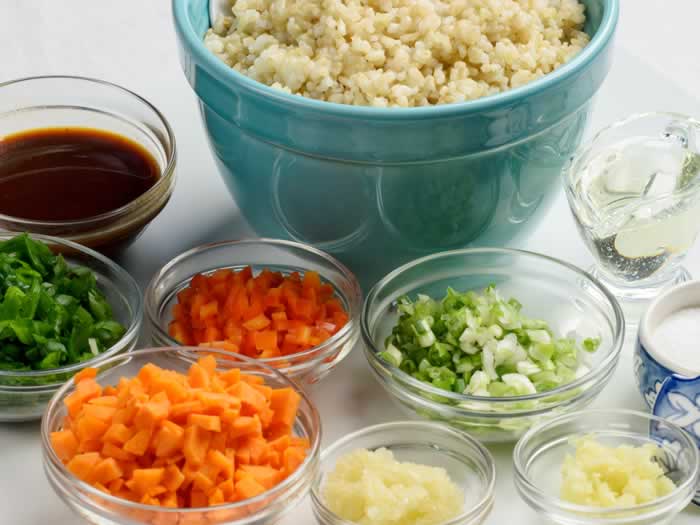
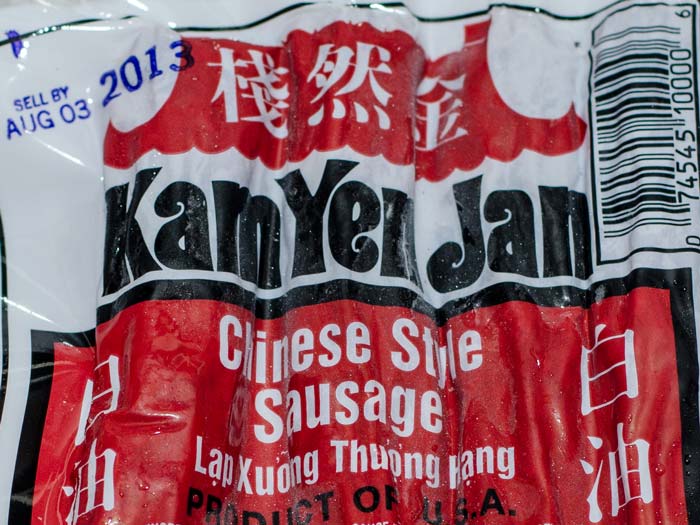
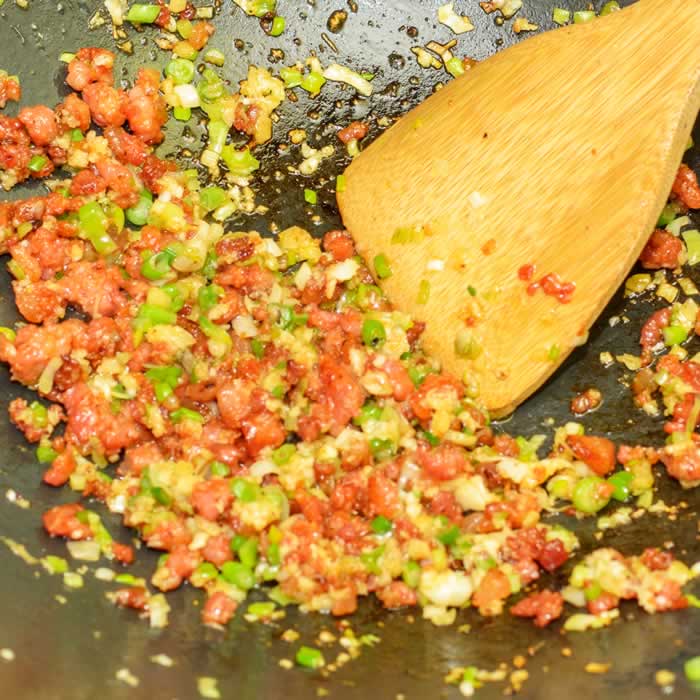
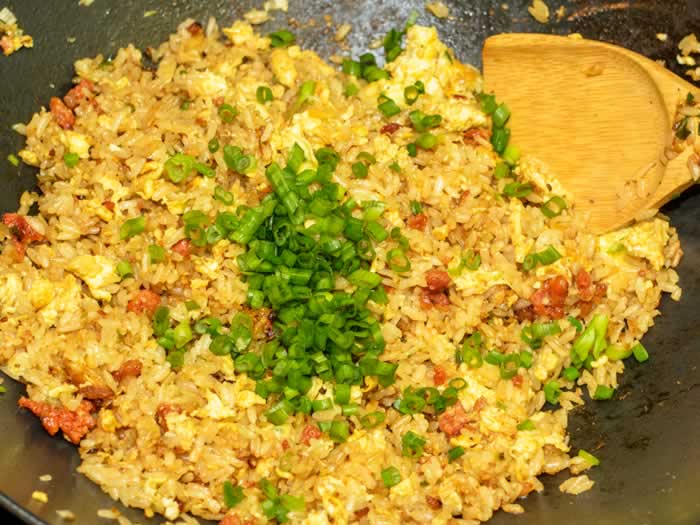
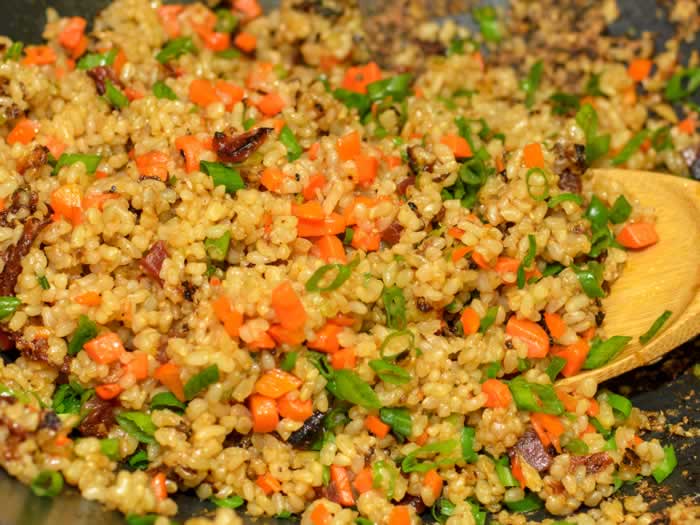
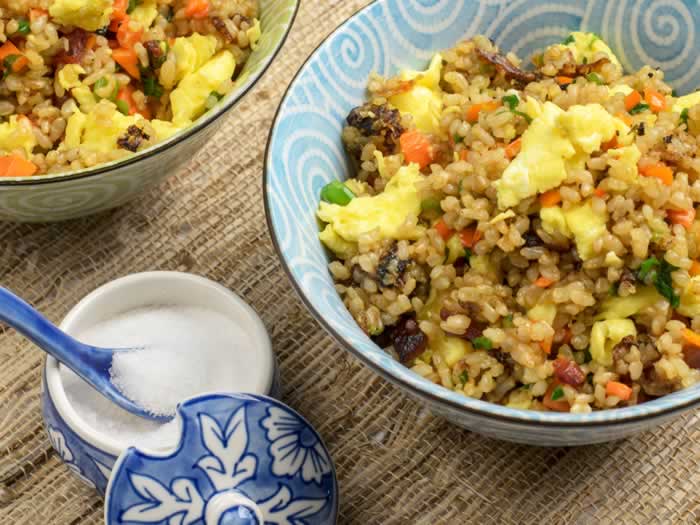
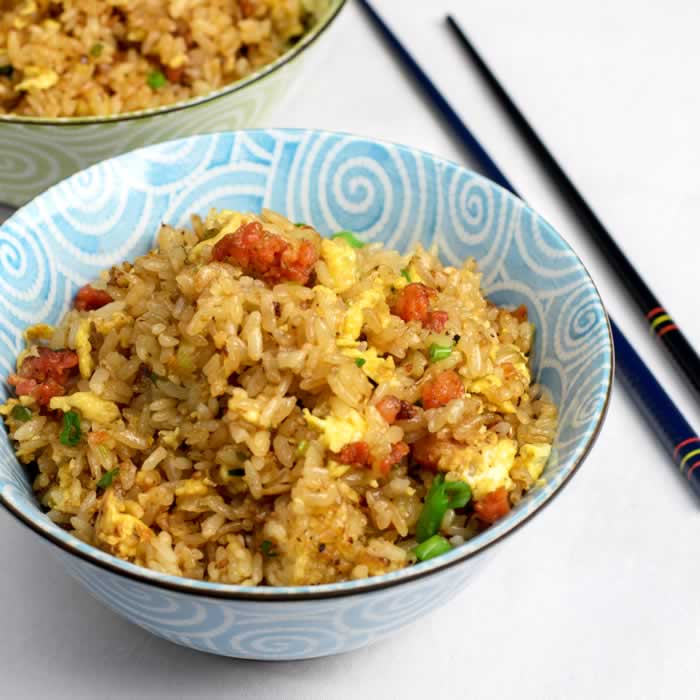
This has been such an eye opening post!! I make fried rice a lot, but I still picked up some tips! Never heard of Wok Hay!
Pam, thank you. I had been searching for so many years for the source of the illusive flavor I experienced with Fried Rice as a kid. When I encountered the idea of wok hay, it made total sense.
Wow, I had no idea there were so many nuances to making fried rice! Also, I see my prior mistake using jasmine!
Alisa, yes, such a simple dish, but not easy to make perfectly. But when it’s perfect, it’s AMAZING.
How do I remove the left sidebar so I can read the text?